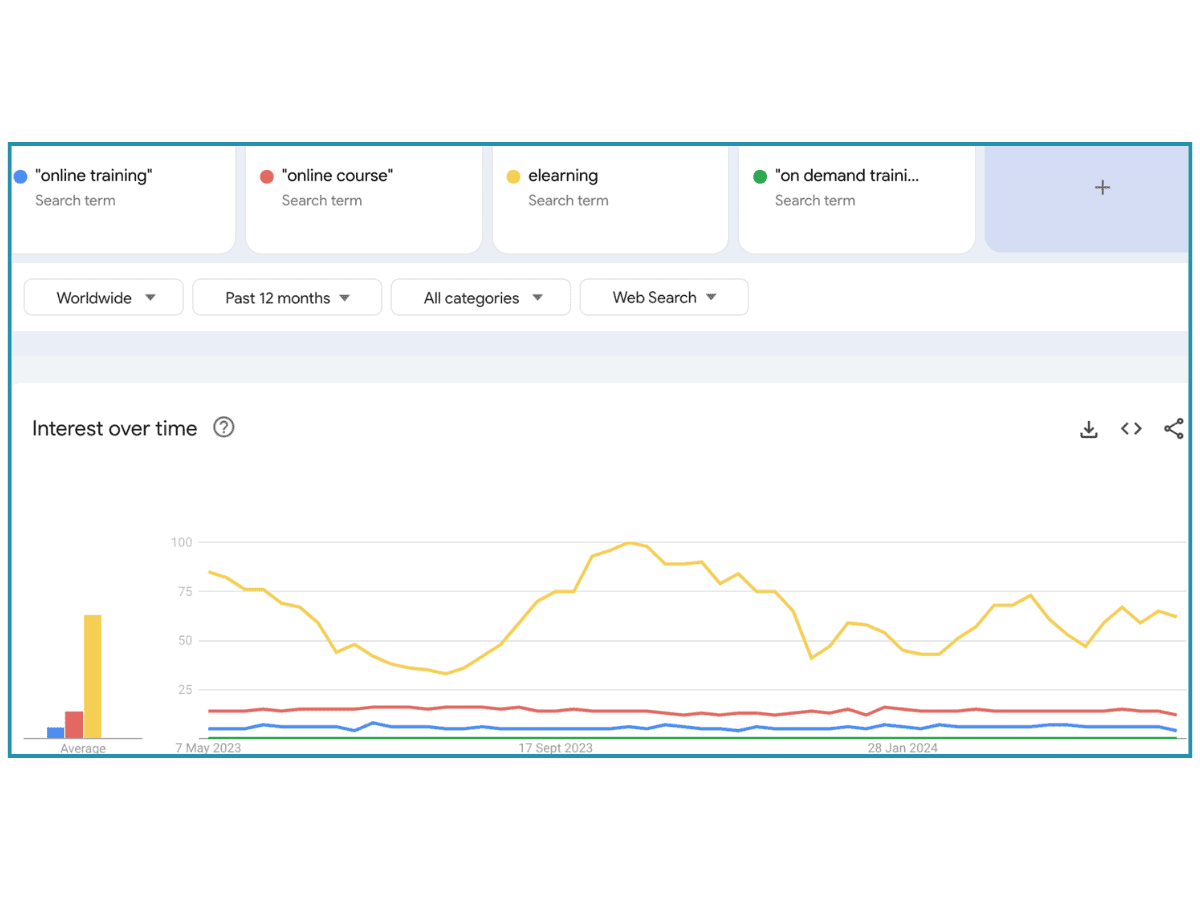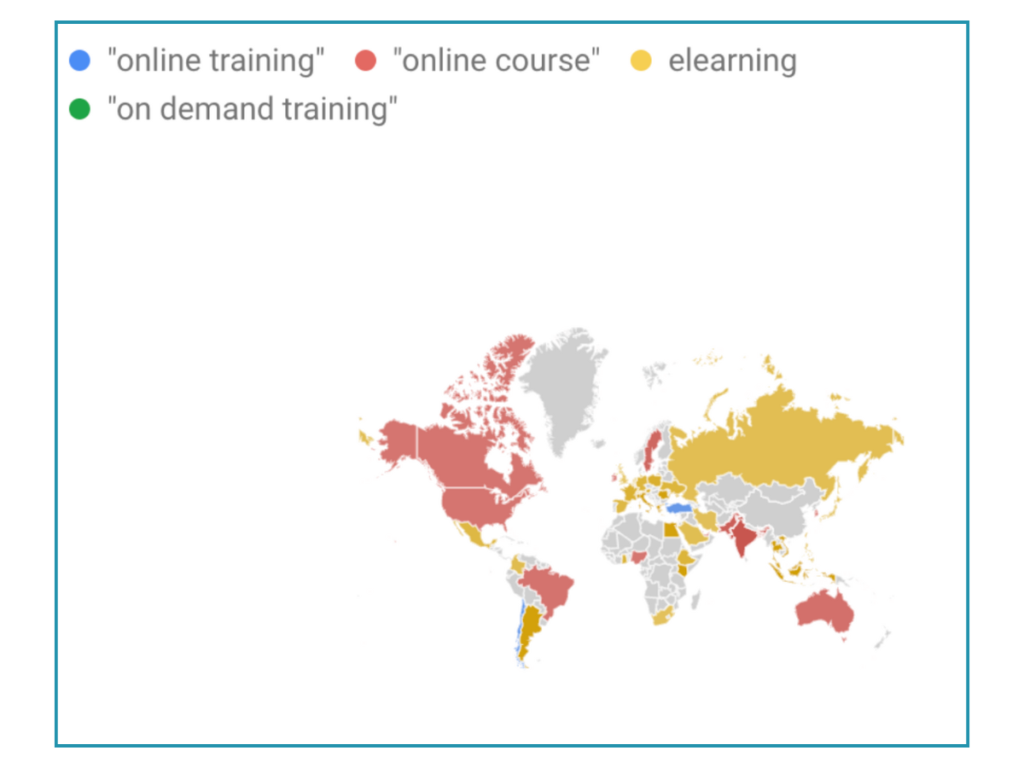How to Choose the Best Product Name for SEO

By the beginning of May, a fabulous trip to Japan over Easter already felt like a distant memory and I was back in the thick of it with work. Starting the month picking up the skills bootcamp and catching up with learners on one-to-one support calls. I also dabbled with a spot of mentoring for the Google Digital Garage and enjoyed leading the Google ‘Build your business brand online’ webinar on YouTube which is a jam-packed session.
In the middle of May I spent a week in Uxbridge as I needed to take my daughter ‘down South’ for her work experience week. My reliance on the Premier Inn wifi proved challenging for delivering training sessions, fortunately my phone’s hotspot was far more reliable. I familiarised myself with a number of coffee shops and lived/buzzed from more cappuccinos than I care to remember.
Why product naming matters for SEO
This month one of my long-term clients has decided to start the process of redeveloping their website. and, as part of this, they are looking to launch a new range of products. They are a technical training provider selling online training programs, both self-study and live remote sessions, and we’ve had discussions for some time about the naming of the products (training courses).
Choosing the right name for a product might seem straightforward, but it can be difficult especially when longstanding terminology is already in place, because then it’s not just about changing the words, but also a embracing a change of mindset.
Naming your products correctly is important for SEO, brand recognition, and customer engagement. A well-optimised name can improve search rankings, make your product easier to find, and help connect with your target audience.”
Website owners often just give products names that make sense to them without considering or understanding what their target audience is actively searching for. The problem here is that what we call things isn’t necessarily what everyone else does, and this is can be further complicated if your target audience is in different geographic locations.
Even those of us in different regions of the UK call things by different names. A popular British social media conceit is to ask people what they call a bread bun/roll as names vary depending on the region:
- Bap – Often used in Scotland and Northern England, typically soft and floury.
- Roll – Used widely across the UK.
- Bun – This term can also refer to sweet rolls like hot cross buns. In some areas, it refers to plain bread rolls as well.
- Cob – Commonly used in the Midlands; usually round and crusty.
- Batch – In Coventry, a batch refers to a bread roll.
- Stottie – A term commonly used in the North East; thick, round bread, which is often flat.
- Barm – Used in the North West
My point here is that if you’re a baker in the North West selling rolls using ‘stottie’ as a name is unlikely to resonate with your audience, you’d be better to think about using ‘bap’ or ‘barm’.
Similarly if you’re selling products in different countries, you need to understand the regional terminology used.If you sell swimwear and are based in the UK, you might be right to use the keyword “swimming costume” for your British audience, however if you were selling to USA you’d find the keyword “swimsuit” is widely used.
So, back to my client, the redevelopment project highlighted the importance of aligning product names with market search trends and customer insights. As I said, we’ve had discussions for some time about product naming. My client prefers the term ‘on-demand’ training, whereas for me the jury was out as, from looking at Google Search Console data, it didn’t appear that too many people were using this keyword to find the website.
I wanted to get some customer insights so I undertook some research…
How to use keyword research to name your products:
To ensure the product names we choose align with what our target audience is actively searching for, I started with some keyword detective work. We don’t have the budget to employ a fancy market research agency, but there are free and low-cost tools available to business owners to understand what their potential customers are looking for.
Customer Surveys
We directly engaged with our current and potential customers through surveys sent to our mailing list. I created a survey using Google Forms which is free and super easy to set up. This was effective for me as responses were automatically collected in a Google Sheet. I asked some multiple choice questions with suggested product names as well as having a free text area for customers to add their own feedback.
Competitor Analysis:
I explored how my client’s competitors name their training courses. This is a crucial step as it not only helped me to identify not only the commonly used terms, but also any gaps in their product offering that could be opportunities for differentiation.
Social Media Listening:
By monitoring discussions on platforms like Twitter and industry-specific forums, I got some understand of how different people talked about and searched for online technical training. This listening extended beyond just seeing which terms were popular—it helped us understand the context in which they were used.
This initial research led me to four options to choose from:
“elearning,” “on-demand training,” “online course,” and “online training.”
Having identified these seed keywords I did further research to see which ones would be most appropriate for our audience using some of my favourite tools: Google Trends, LinkedIn polls and Google Keyword Planner.


Google Trends
Google Trends is a useful tool for understanding how different keywords perform over time and across different regions.
I compared the four keywords: “elearning,” “on-demand training,” “online course,” and “online training.” and got the following results:
“Online Training”:
This keyword shows a moderate interest over time. It could be a reliable term to use due to its consistent performance.
“Online Course”:
This keyword shows higher search interest that peaks significantly at certain times, suggesting a fluctuating yet strong popularity. This keyword is more frequently searched in the USA, suggesting that it might be the better choice for targeting an American audience.
“eLearning”:
This keyword shows strong and occasionally very high search volumes in Europe and Asia, indicating a strong regional preference.
“On Demand Training”:
This keyword has the lowest search volume, indicating it is less popular among users.
This Google Trends data helped us understand not just the popularity of terms, but also the geographic relevance. As my client is an international provider these findings have contributed to our ongoing discussions; they are Europe based, but keen to sell more to the large US audience so “elearning” and “online course” are looking like the front-runners.
LinkedIn Polls
I love a LinkedIn poll, and because my client has an active presence and relevant network, we were able to use his profile as well as the business page to ask our audience their preferences. I ran polls on which of these keywords they might use when searching for training like ours. I pinned the poll to the top of our page and ran it for a week.
Google Keyword Planner
Nestled inside the Google Ads platform is the Google Keyword Planner tool, it’s designed to help you to choose the right keywords when you run paid advertising campaigns by providing data on search terms.
The keyword planner is useful for anyone wanting to get found on Google as it gives insights into the search volume, trends, and competition levels for specific keywords.
I compared my four keywords to get data on the number of searches each term receives and how competitive these keywords are for advertising and got the following results:
“Online Training”:
Receives between 100 to 1K monthly searches with a low competition level, suggesting it is somewhat sought after but not oversaturated in the market.
“elearning”:
With 1K to 10K monthly searches and low competition, “elearning” appears to be a popular term that isn’t competitive in paid search, potentially offering good opportunities for visibility.
“On Demand Training”:
The search volume for this keyword is very low (10 to 100 monthly searches) so this term will probably not drive organic traffic.
“Online Course”:
This keyword has a decent search volume of 100 to 1K monthly searches, with a medium level of competition. It strikes a balance between popularity and competition, so potentially an attractive keyword for targeting.
Final Thoughts – Choosing The Best Product Name
The data from the surveys and polls I ran indicated a preference for terms like “online courses” over “elearning,” however, social media listening suggested that “elearning” still held strong recognition and could potentially engage a more global audience.
Despite the results the research provided, internal discussions are ongoing. Changing established terminology is challenging, as it involves shifting the mindset and marketing strategies that have been in place for years.
These discussions are crucial in ensuring that any change in terminology aligns with the client’s brand and overall business and marketing strategy.
I’ll be making a case for “elearning” and “online courses”, but the jury’s still out!
Key Takeaways When Naming Products Online:
-
Align with search trends
Choose product names that your target audience is actively searching for. -
The importance of regional terminology
Product names may need to vary regionally to connect effectively with different audiences. -
Use a variety of research tools
Customer surveys, social media polls, Google Trends, and Google Keyword Planner to gather data on search trends and audience preferences. -
Competitor Analysis
Check out what the competition names similar products to identify trends and gaps in product offerings. -
Ask your audience
Ask your existing customers for feedback on potential product names.
Want more digital marketing insights? Join my supportive Basics For Business community where you’ll find practical tips and trips and regular workshops. For one-to-one support check out my digital marketing coaching.



